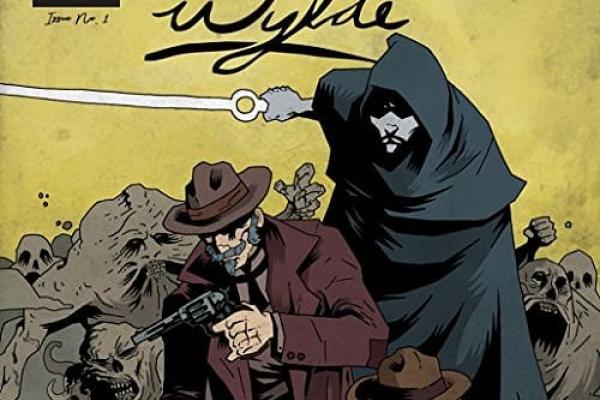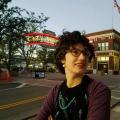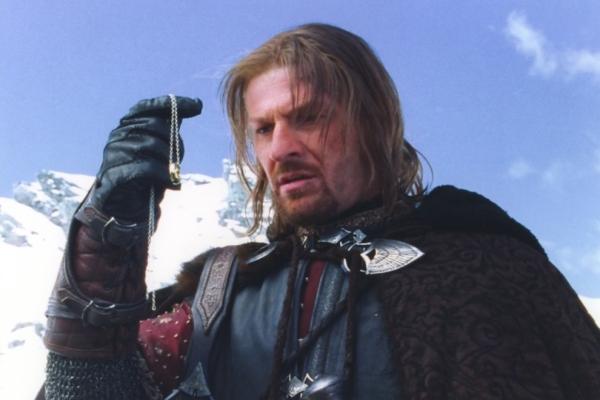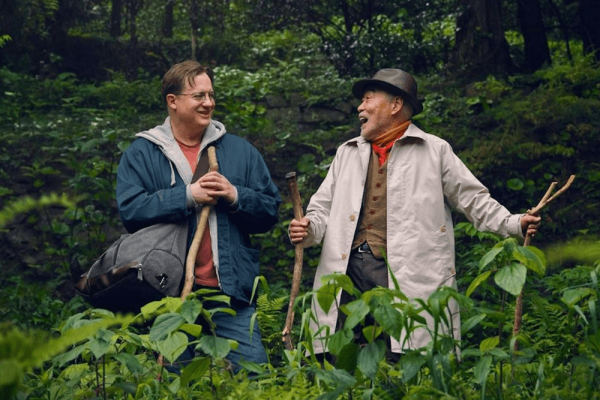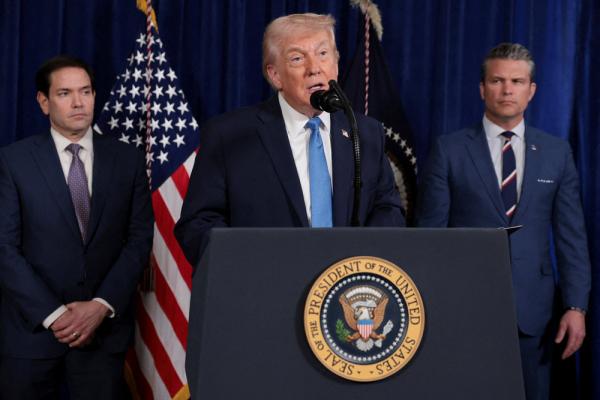Comics-based storytelling is one of contemporary culture’s most dominant forces. Comic books give us modern gods in the form of superheroes. In movie form, they’ve projected those larger-than-life contemporary myths on the biggest screens available. Comics also present new ways to explore ancient stories.
Myth-making is also something the creative forces at Cave Pictures Publishing, a new comics publisher, are fascinated by. The publisher aims to use the medium’s possibilities in ways that bring together faith-oriented audiences who may be new to comics, and long-time fans of the medium looking for thematic depth. Wylde, a western-themed horror comic, is currently available on ComiXology. The Light Princess, an adaptation of the George MacDonald fairy tale, arrives in February.
Sojourners spoke with Cave Pictures Publishing’s President Mandi Hart and Publisher Mark Rodgers about their inspirations, upcoming titles, and goals for engaging audiences on a spiritual level.
This interview has been lightly edited for clarity and length.
Abby Olcese, Sojourners: How did you decide you wanted to create a faith-inspired comic book publishing company?
Mandi Hart, President, Cave Pictures Publishing: My background is in filmmaking, so I actually come to comics from that route. It’s been fascinating to me the more I’ve gotten into it to learn just how strategic comics are. In a lot of ways, they are the root of much of our modern pop culture. You think of the most popular blockbuster movies of the last decade, and a lot of them are birthed out of different comic stories and series over the years. That branches out into spin offs and merchandise, and so much of our modern identity and culture is rooted in that. Even though I come at it a little more circuitously, I definitely see the strategic placement of comics in our global pop culture.
Mark Rodgers, Publisher, Cave Pictures Publishing: I come at it from more of an affinity perspective. I grew up in the 70s, during what’s called the “bronze age” of comics, with Jack Kirby’s work. Part of Kirby’s world creation was a real interest in mythology. He wrote a series called the New Gods, and a lot of spin-off titles. It was a real effort to weave in other parts of the DC universe, and I thought it was a really interesting exercise. It reminded me, in my own life, of the power of myth in shaping our lives and our journeys. With faith, I really saw that ability to make old myths feel new, without rejecting the one true myth (Christianity). C.S. Lewis talks about the power of myth, that there’s something in it that can revivify the familiar.
Myth, for me, in the form of comic books has had a place in my spiritual growth. We named the company Cave Pictures because of the various efforts of human society to try to define this place, find meaning in the universe and explore transcendence and God, sometimes through paintings on cave walls. We’re now really driven in our current context by visual images and story combined, and I think graphic novels and comics, their day is now.
Olcese: What kinds of audiences are you hoping to reach with these comics? Are you looking to invite non-believers in to the fold, or to expand the minds and palates of Christians who aren’t reading comics, or both?
Hart: Our primary audience is Gen Z and young millennials who are spiritually sensitive, but not necessarily identified with a particular religious institution. But, because our stories all interweave spiritual themes and questions of meaning, they are also accessible to audiences who would identify with a particular faith or religious tradition. We are looking to bring in readers from a religious background who wouldn’t otherwise necessarily read comics, or haven’t been exposed to them yet, but we’re also aiming to be more mainstream.
Rodgers: I do think the search for meaning in life, the spiritual, is universal. We think these deeper themes that are true ... should make compelling stories with universal appeal.
Olcese: In your formation of your publishing slate, how did you find writers or artists that you wanted to work with?
Hart: It was sort of a combination of things. In some of the talent we’re working with, we had previously established relationships through other culture-making ventures. One of our editorial advisers actually conceived of one of the story concepts that we developed. In his creation of that initial story concept, he had someone in mind who had the right skill set and the right tone.
We had some industry insiders giving recommendations, we had some previously existing relationships, and then we also had some talent who we didn’t start out aware of, but came to them through either someone recommending them or through searching for artists with a particular style or background. In one instance, it was a providential find. Meredith Finch, who’s working on The Light Princess, our fairy tale, has been incredible to work with, and a gift beyond our expectations.
Olcese: Could you tell me a little about some of the themes of social good that appear in your slate of upcoming titles? For instance, a couple of the titles you’ve announced are horror comics. What themes does a genre like that contain that your readers could meditate on spiritually?
Hart: When you think a little more deeply about the common element in something like a horror comic, it’s supernatural fiction. It’s prime material for spiritual reflection. So, for our zombie series, Appalachian Apocalypse, it does raise interesting questions about the power to reanimate the dead, and the power of life and death. What’s the nature of that power? Who should exercise it and how? And what are the moral parameters of having that sort of authority?
In all of our stories, redemption and sacrifice and the power of love are also important themes, which can resonate really well with readers who are interested in that sort of spiritual introspection.
Rodgers: I think horror is a great genre to work in and talk about these themes. One of our inspirations is the Inklings community, which not only pioneered fantasy for all practical purposes, but also explored science fiction and horror, through the work of Charles Williams and his supernatural fiction. There has not been as much storytelling in that space as the genre permits. I’m excited that we have a platform that allows us to do more work in horror and supernatural fiction.
Olcese: What do you think success looks like for this first run of titles?
Hart: One metric of success for us is being able to expand readership and get more people into local comic shops. We are really looking toward how we can be in relationship with and support local retailers as they support the industry as well. We’re looking for ways that we can get more readers interested and enthusiastic about this format, because it’s unique and lends itself so well to modern myth, and there’s already such an appetite for it, and for story in general. So, one of our primary metrics of success will be expanding the readership for comic shops and bringing more readers in, and helping to further solidify the format as the perfect myth-making tool.
Rodgers: My hope eventually is that we birth the next Middle Earth, the next myth that really captures the imagination of the culture. What I’ve already seen is pretty fun. We’ve already hosted a panel at Baltimore (Comic-Con), we hosted a panel at the L.A. Comic Con. Mandi (Hart) may be the only female executive of a comic publishing company. So, it’s nice to have a platform that’s generated some thoughtful conversations, too.
Got something to say about what you're reading? We value your feedback!
